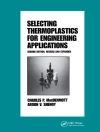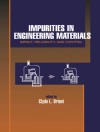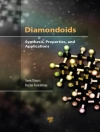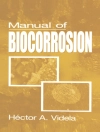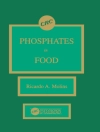This Brief presents a chemical perspective on frozen vegetables, also known as “ready-to-use” foods. It elucidates the chemical properties and modifications of vegetables from harvest and treatment to the end of their long shelf-life. Particular attention is given to the microbiological colonization of vegetables during the freezing treatments and to the chemical and physical modifications associated. The authors explore the undesired effects of this colonization through the lens of the antibiotic-resistant Staphylococci found in hermetically-package frozen vegetables. With this informative and instructive Brief, readers will understand the importance of the frozen storage technologies.
Tabela de Conteúdo
Antibiotic-resistant Staphylococci Isolated from
Hermetically-packaged Frozen Vegetables.- Technology and Chemical Features of Frozen Vegetables.- Instrumental Systems for the Control of Frozen Vegetables During Refrigeration.- Colorimetric Modifications in Frozen Vegetables.
Sobre o autor
Professor Izabela Steinka is specialised in microbiology and food hygiene. She is a professor at the Maritime University in Gdynia, and she is particularly interested in microbiological interactions. The topics of her recent research comprise health promotion and biological aspects of packaging, which are related to her didactic work at the Medical University in Gdansk and College of Health and Beauty in Gdynia. Her published works include ‘Hygiene in Commerce and Service Sector’ (2007), ‘Prognostics of Microbiological Interactions” (2007), ‘Lactic Acid Cheese Safety’ (2008), and ‘Microbiology of Food and Industrial Materials’ (2011).
Caterina Barone is an experienced author in the field of food science and quality audits. She is an ISO 9001-auditor in different sectors, including also professional training services. Her recent works are focused on food packaging hygiene, chemical and technological features of cheeses and other prepared foods, dedicated BASIC software, and microbial toxins in different foods for human consumption. In addition, Caterina has studied the evolution of public safety and hygiene in the European Union with relation to foods and beverages by means of the RASFF system. At present, she is also vice president of the Association ‘Componiamo il Futuro’ (CO.I.F.) in Palermo, Italy, working in the field of professional training.
Salvatore Parisi is a chemist and food scientist, working as a consultant for the food industry and as a lecturer in the academia. He obtained his MSc in Chemistry from the University of Palermo, and a Ph D from the University of Messina (Italy). Dr. Parisi is also a Preventive Controls Qualified Individual (PCQI) after the successful completion of the FSPCA Preventive Controls for Human Food course in 2016 (according to new U.S. regulations). He serves as series editor for the Springer Briefs in Molecular Science: Chemistry of Foods and he is a member of the Editorial Board of different scientific journals. Dr. Parisi is an associate of the Sicilian Order of Research Chemists (Italy), the EFSA’s Expert Database (EDB), Parma (Italy), and the FAO Food Safety Expert Roster, Rome (Italy). In addition, Dr. Parisi is a member of the AOAC Official Methods of Analysis SM (OMA) Expert Review Panel (ERP) for Fertilizers. He has an important scientific contribution (with more than 120 articles, books and software) in the fields of Packaging Technology, Polymer Chemistry, Shelf Life Prediction and Food Microbiology (Italian Oxoid Award, 2001). Finally, Dr. Parisi is an expert instructor for Learning.ly from The Economist Group.
Maria Micali is an experienced author in the field of food science and technology, with particular focus in chemistry, microbiology and hygiene. Dr. Micali obtained a Ph D in food hygiene from the University of Messina, Italy, and she has been working on food chemistry and technology, food packaging hygiene, chemical and technological features of cheeses, study of sensorial features with reference to HACCP researches, and mandatory food traceability. Dr. Micali is also a lecturer in different sectors, including professional training. Her published works include ‘The maximum water absorption in cheeses. Tripartite networks of absorbed molecules per nitrogen’ (2009), ‘The Chemistry of Thermal Food Processing Procedures’ (2016), and ‘Traceability in the Cheesemaking Field. The Regulatory Ambit and Practical Solutions’ (2016).


